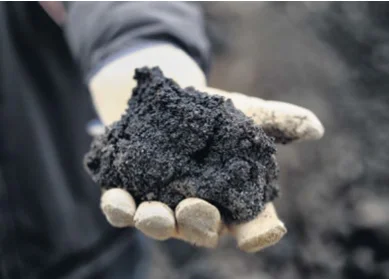The value-added crisis in Canada’s trade
By Jim Stanford, Economist, Unifor
You learn a lot about a country by analyzing its international trade. What does it produce that the rest of the world wants? What does it need, but can’t make itself? And what is the balance between the two?
By these criteria, it’s clear that Canada has a big problem, an unintended consequence of the energy boom that’s dominated our economy since the turn of the century.
We now face a Jekyll-and-Hyde dichotomy in our trade performance. Sure, there’s a growing trade surplus in energy products: almost $70-billion in 2013. But unfortunately, our performance in all non-energy products and services has deteriorated more rapidly than our energy exports have grown.
Until 2002, our export portfolio was diversified, and we generated trade surpluses in many different industries (value-added as well as resources). But that changed once the energy export boom kicked into high gear. We began to incur trade deficits in non-energy trade, which reached a record $76-billion in 2013. Ironically, the more energy we export, the less of everything else we export. Our trade has de- industrialized before our eyes.
Other components of our trade also deteriorated during this period. Our trade deficit in services reached $25-billion in 2013 (hurt by the overvalued loonie, another side-effect of the energy boom). And net outflows of investment income (reflecting growing foreign investment here) are another drain. Put it all together, and our balance of payments is now deep in the red: by $60-billion per year.
Once we could export both resources and value-added products to the rest of the world – and more than pay our bills in the process. But now our capacity to produce for the world has become narrowly pigeon-holed in resources (especially petroleum).
In short, no matter how fast we dig it up and export it, we need more than oil to pay our way in world trade. So how do we escape this resource-dependant trap?
Two key strategies are needed:
- Canada must defend its capacity to produce and export value-added products, not just resources. We must be able to produce higher-value products (and services, too) that the rest of the world will buy. This will require conscious industrial strategies to support investment and innovation in manufacturing and tradable services.
- An obvious place to start is by maximizing value-added possibilities directly connected to our resource base. Instead of exporting bulk unprocessed commodities, we should upgrade, refine and process our petroleum (into refined products and petrochemicals). It’s shocking that we now import almost as much refined petroleum product as we export – shameful for a major petroleum power. Upstream, too, we could do much better at leveraging Canadian-made inputs (like high-value machinery and capital equipment) for our mines and wells, instead of importing them all from the rest of the world.
Canada will never become a truly developed and successful trading nation unless we rebuild our collective capacity to add value to our own resource wealth. We can and must become more than hewers of wood, drawers of water – and scrapers of tar.
Primary energy production in Canada increased 3.3 per cent between 2011 and 2012 to 17,335 petajoules. This followed a 3.6 per cent increase between 2010 and 2011.
One petajoule equals roughly the amount of energy required to operate the Montréal subway system for one year.
Crude oil accounted for the largest proportion of primary energy production in Canada in 2012, at 42.9 per cent. This was followed by natural gas (34.9 per cent), primary electricity (9.9 per cent), coal (8.6 per cent) and gas plant natural gas liquids (3.6 per cent).
EXPORTS AND IMPORTS
Just over 58 per cent of primary energy produced in Canada is destined for export markets, primarily the U.S.
Exports of Canadian energy and energy products increased 5.3 per cent in 2012 to 11,234 petajoules.
Canada exported 73.5 per cent of its crude oil production, 56.5 per cent of its marketable natural gas and 23.3 per cent of its refined petroleum products.
Imports of energy decreased 0.8 per cent from 2011 to 3,709 petajoules in 2012.
Crude oil accounted for 44.6 per cent of imports, followed by natural gas (32.7 per cent), refined petroleum products (13.4 per cent) and coal (7.4 per cent). Together, these products and commodities made up 98.1 per cent of energy-related imports.
Visit the host publication or see more related articles below:










